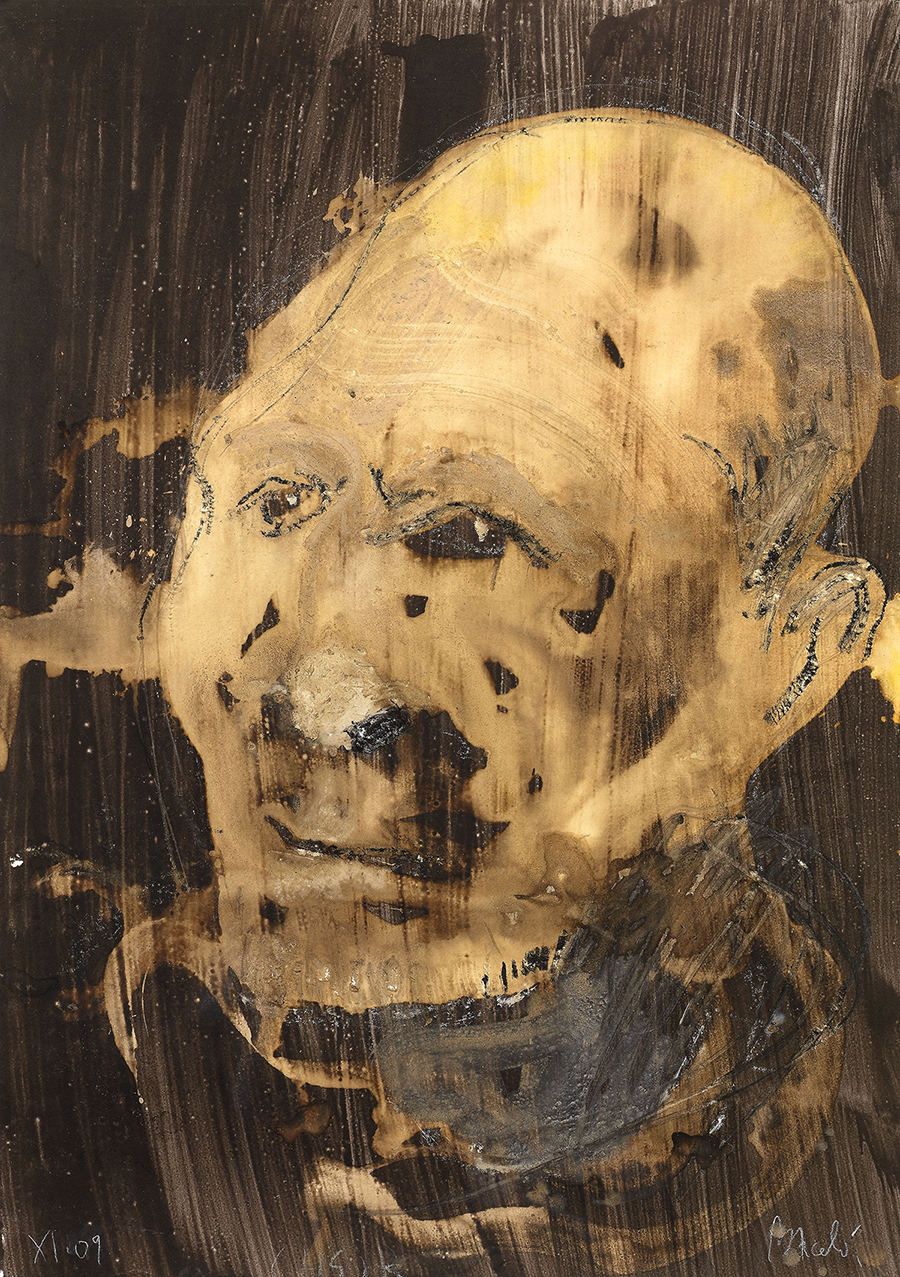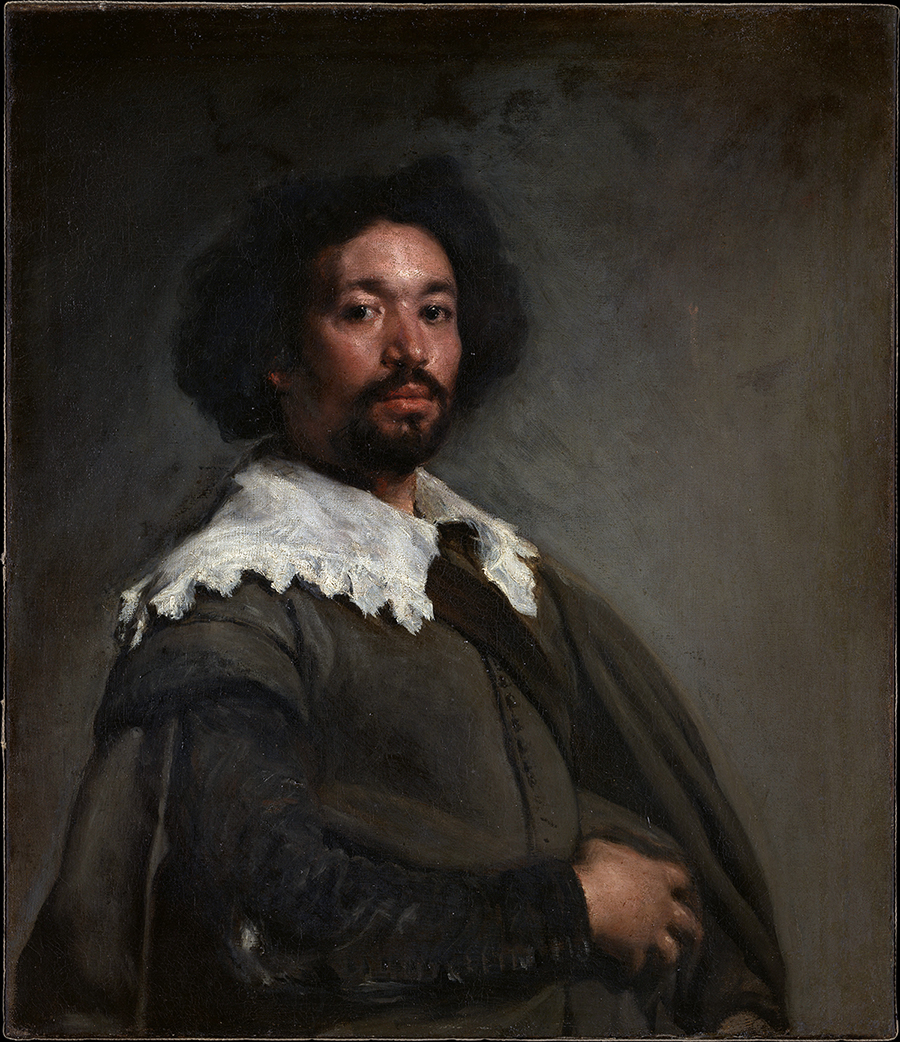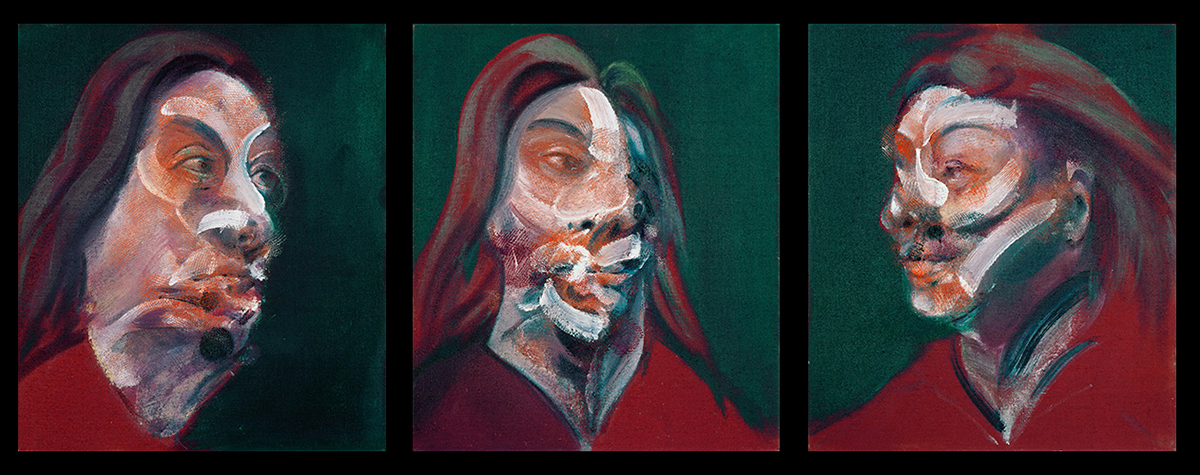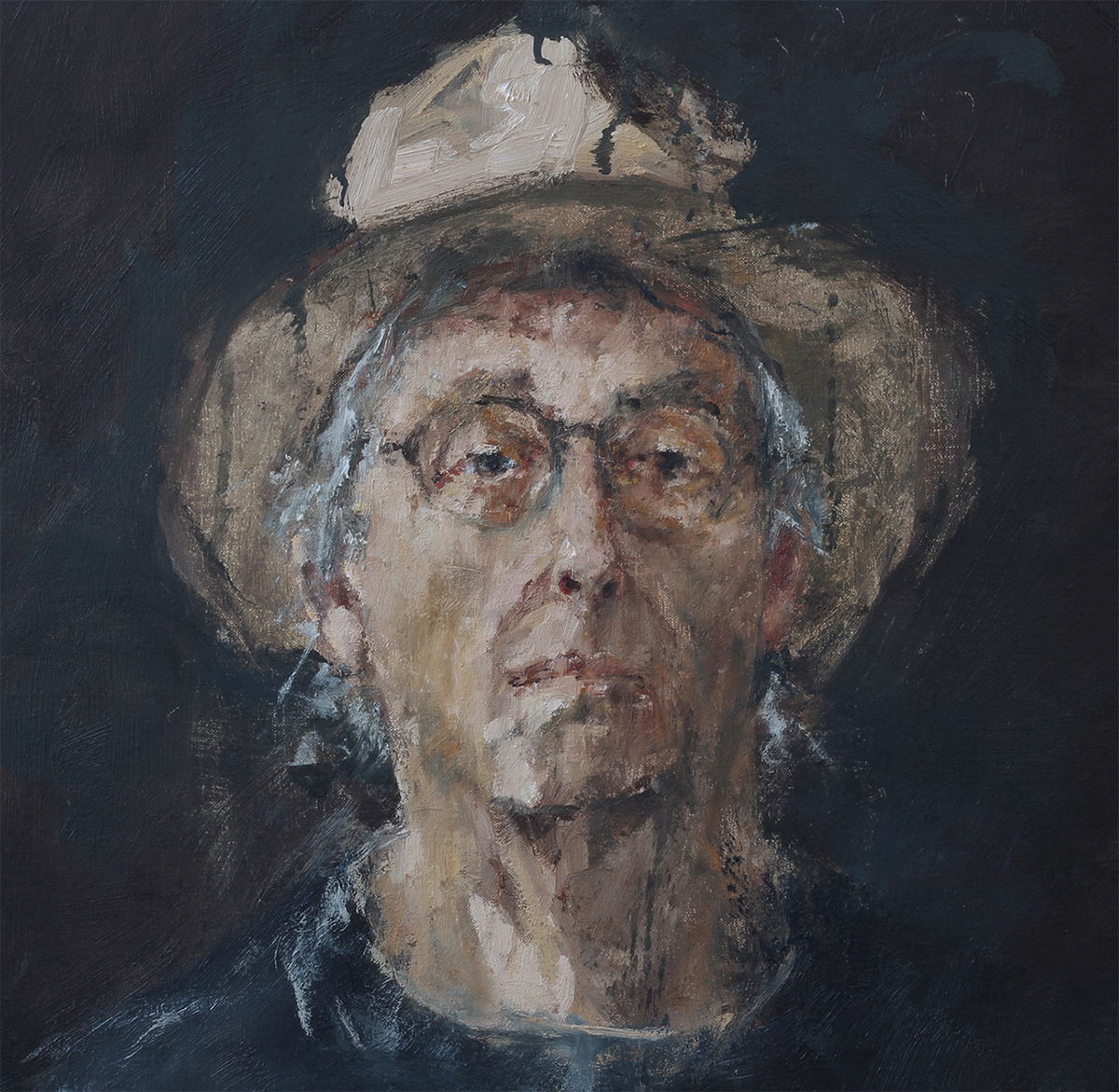Back to writings
Back to writings
THE LAST SELF-PORTRAIT MADE IN BARCELONA
At the end of September I changed the ‘passport photo’ on my Facebook page. I put the last self-portrait made in Barcelona on the web.
Oil on canvas with cats watching from above (click on the image to go to the portrait on my site).
92 x 73 cm
September 2020
Why paint a portrait and why in this way and at this moment?
Only later I realized that I wanted to look at myself at the spot where for twenty years I spent my life for the last time.
I had a white canvas and made the painting without thinking much about anything. I did it in this way not to make some stylistic statement, just as a down to earth confrontation.
I am not a pamphleteer, never was I fear. I’m left with even less ideals, less holy aims to aspire. ’Avec Le temps’ by Ferré is my anthem. Let’s just leave some beautiful paintings behind and that is all.
But what is beauty?
We’ve freed ourselves from practically any restriction. In the past there were rules and regulations. In the Renaissance there existed the official style. The portrait had to resemble. Actually all quite comforting.
Was it the photography that shook everything upside down?
Round 1900 Cézanne moves from following nature to imposing his ideas on nature. His portraits still resemble in a somewhat clumsy way, but with the birth of the early cubism things really start to tremble loose. Picasso is a nice example to follow. He went through all stages of distortion. His early cubistic quite stiffly painted portraits still bear much resemblance (see portrait Ambroise Vollard left image). Later on it becomes less and less. Do we still recognize Maria Teresa Walter in the right image or is this more a playing with cliché images of mouth, eyes, nose and so on that is the main subject?

Ambroise Vollard and Maria Teresa Walter by Picasso.
With God declared dead (putting ourselves on the throne) and able to see things from the non-visible reality by the electron microscope everything has become questionable. Even an eye seen from very nearby doesn’t look like and eye anymore. Nothing is what it seems to be at first glance.
An electron is a wave and a particle at the same time, it can be in different places at the same moment. Time and space can be bent.
An idea of beauty and aesthetics has left the stage.
I wander around quite a lot in my work, but with portraits the rule of similarity still stands. This rule may be grounded in an old conception of the world, an old idea about aesthetics. I keep on searching for beauty whatever useless and fake idea it may seem (art is useless and that is its strong point in a world where all is measured by its usefulness).
Did I wander further away years ago (searching more for what I found should represent my method/style or how it had to be), with the climbing of the years I appreciate more and more the realistic image. The adventure of the big gesture has moved to a smaller scale. I look more microscopically. The vaunting of my ego has toned down. This counts especially for the portrait. I try to listen more and argue less.
I sweep the fragments together, the shock of the abstract belongs to the past, and painting with horses’ figs has become pathetic. Looking in a shattered mirror is interesting, but in the end leads to what? On a bigger scale my portraits look more like what we see in the so called real world; if you zoom in you may find the chaos that belongs to these times.
I don’t see much in the really out dated convictions of many experts. Many call the on a high level experimenting artist courageous: ‘we don’t understand, look in admiration; he is an outpost’.
There is no terra incognita left and that is why much of the with danger encircled missions in the jungle have become a foolish occupation. What is the use of rediscovering the origins of the Nile, especially now that we have airplanes and satellites? How many more times do we have to discover that at the end of the rainbow there are no pots filled with gold? I have abandoned the big gesture and go for depth.
It is a good thing to go wild at the start of a career, but at a certain moment it leads to nothing but worthless fractions. The why is the important question of a distortion. We can all distort, but not all can give it a meaningful value.
Again this idea of meaningful linked to aesthetics. Why do I speak of meaningful? I try to hold on to a cloud… The resemblance in a portrait is like sticking to the rules in a chess game. It is nothing more than playing a game. The question of useful is absent. Is playing chess a useful occupation?
Not everybody has these doubts, in the art world the name and fame of an artist can be of more importance than the decrepit idea of beauty. You have to hang on to something don’t you?
An example:
A couple of years ago a renowned gallery owner showed me his portrait made by Barceló. It was executed in acid on a zinc plate. It looked like the image below.

Barceló: ???
I hardly recognized a face let alone see a resemblance with the gallery owner. It may as well have been a representation of a potato. Still he was proud of owning it, even if he didn’t recognize his face in it. This gives to think of what he sees in the mirror every morning…
This gallery owner possesses prints of Picasso and a precious self-portrait of one of the by me most appreciated painters of the end of the nineteen hundreds. How can this be? Is this a case of uncritical adoration of the fame of a valuated artist by lack of any other criteria? What if I had made it?
Who for me are great portrait painters? How do I come to my judgements/ideas about beauty, ugly, good and bad?
To name a few: Velázquez, Goya, Rembrandt, Bacon and Picasso. Of course there are many more. The time in which they lived is not important to me. What they have in commune is that they all have their own atmosphere in their works.
Velázquez’ portraits always show respect, even when the portrayed are clowns, midgets or servants.

Velazquez: Juan de Pareja.
I adore the late portraits of Rembrandt. There is so much compassion to be found in them. Still, I feel like all are related. The way he paints them gives this twist. It is not a negative notion. But here his differ from the late portraits of Goya.

Rembrandt: Lady with ostrich feather.
In 2016 I visited the exhibition of Goya in London. I was surprised by how different the portrayed looked. They seemed total strangers to each other.

Goya: Lady with fan.
Three times respect and love… these are doubtful notions, cannot be defined by numbers or meaningful or not.
Someone why knew how to preserve resemblance even by getting off track is Francis Bacon. Hence my admiration (even though with the years he became more and more a caricature of himself). Interesting to see is how he lived his life, how he treated his loved ones.

Bacon: Three studies of Isabel Rawsthorne.
Picasso shows cruelty next to love. He crushed his victims, he himself included. Especially at late age. Read the above. Often I feel as if he hated paint; he used it without any love or mercy. Maybe he was the last one to explore all as an outpost. He made quite a lot of victims… after him came the abstract painters. He rightfully never explored that territory.
I wonder how much still I can recognize Picasso in this portrait. What I see is more a cold fear for death. Very impressive, but a resembling portrait… and is that necessary?

Picasso: Self-portrait.
Long ago a friend asked me why she should have her portrait made. She wished no resembling image, especially not one that would outlive her. I understand. But still… I love to play the portrait game.
Seen from close by gives the answer. You see how it is made, apart from what it represents. A painting is the adventure where unexpected painterly solutions are to take place. They show the hand of the maker, his way of treating the material and in the end how his attitude towards life is. An ambitious artist turns his soul inside out when at the top of his abilities.
An image from reality creates problems when executed. These problems lead the way. If all is permitted, why not go for the seemingly useless resemblance?
With my last self-portrait the hat gave problems. The colour is light creamy, but the rim is in the shade. How to obtain light and dark at the same time? That transparency? I found the solution by painting the rim dark and scraping most off when the paint was almost dry. In this dark transparency I was rewarded with the structure of the canvas as the structure of straw.
Apart from this problem I noticed that the expression was dead, the work was very mediocre at the end of the first day. The hat was a disaster.
When at work I listen to music. The next day I put on quite disturbing music, it helped me to straighten out all. The music gave me the kick in the back. It gave me the right anger to set things straight and break the painting open.
It was done in two sessions. This may show that I didn’t beat around the bush; I went straight for my aim, trusting my instincts. Does it apart from my supposed craftsmanship show my identity?
Three days later I showed it on the web. I am curious what my soul tastes like. Judge for yourself…

Detail of head and hat.
Anyway, I hope it doesn’t look as if a cat has peed over a zinc plate.
Barcelona, October 16, 2020.
